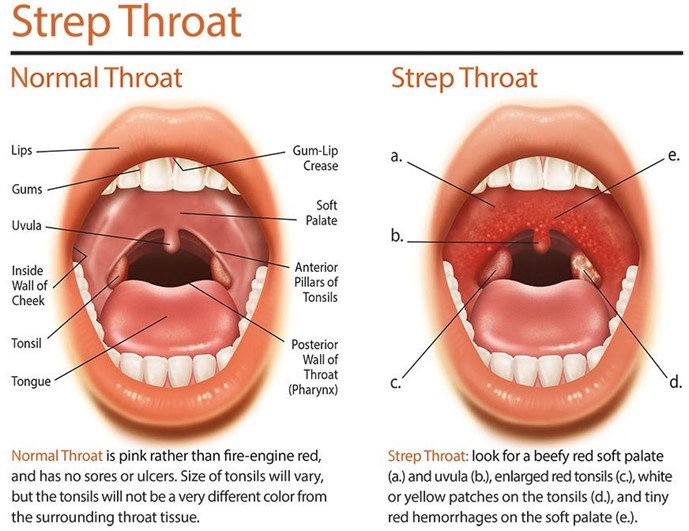A nurse is caring for a child who has influenza. The nurse should identify which of the following statements by the parent indicates the child has an increased risk for Reye syndrome.
"I give my child ibuprofen when his muscles are aching."
"I am encouraging my child to drink grapefruit juice."
"I am leaving a humidifier on in my child's room when he naps."
"I give my child aspirin to reduce his fever."
The Correct Answer is D
Choice A: Ibuprofen is a nonsteroidal anti-inflammatory drug (NSAID) that can be used to relieve pain and inflammation in children with influenza. Ibuprofen does not increase the risk of Reye syndrome, which is a rare but serious condition that affects the brain and liver.
Choice B: Grapefruit juice is a citrus fruit that can provide vitamin C and hydration for children with influenza. Grapefruit juice does not increase the risk of Reye syndrome, but it can interact with some medications and affect their absorption or metabolism.
Choice C: A humidifier is a device that adds moisture to the air and can help ease congestion and coughing in children with influenza. A humidifier does not increase the risk of Reye syndrome, but it should be cleaned regularly to prevent bacterial growth and infection.
Choice D: Aspirin is a salicylate that can be used to reduce fever and inflammation in children with influenza. However, aspirin can increase the risk of Reye syndrome, especially in children who have viral infections. Reye syndrome can cause swelling in the brain, liver damage, and even death. Therefore, aspirin should be avoided in children under 19 years old who have influenza or other viral illnesses.
Nursing Test Bank
Naxlex Comprehensive Predictor Exams
Related Questions
Correct Answer is D
Explanation
Choice A: Lice cannot survive for more than 48 hours away from the host. This statement is false and should not be included in the teaching, as it can cause unnecessary anxiety or confusion.
Choice B: Washing your child's hair daily will not prevent lice, as lice do not depend on hair cleanliness or hygiene. This statement is false and should not be included in the teaching, as it can create a false sense of security or stigma.
Choice C: Lice cannot jump or fly from one child to another, as they only crawl. This statement is false and should not be included in the teaching, as it can cause unnecessary fear or panic.
Choice D: Encouraging your child to avoid sharing hats with other children can prevent lice, as lice can be transmitted by direct contact or by sharing personal items. This statement is true and should be included in the teaching, as it can help prevent lice infestation or spread.

Correct Answer is B
Explanation
Choice A: This test will not indicate if the child has rheumatic fever, as rheumatic fever is a complication of an untreated or inadequately treated streptococcal infection that affects the heart, joints, skin, and brain. Rheumatic fever is diagnosed based on clinical criteria, such as carditis, polyarthritis, chorea, erythema marginatum, and subcutaneous nodules.
Choice B: This test will confirm if the child had a recent streptococcal infection, as antistreptolysin O (ASO) is an antibody that the body produces in response to streptococcal bacteria. A high ASO titer indicates that the child was exposed to streptococcal bacteria within the past few weeks. A streptococcal infection can cause pharyngitis, tonsillitis, scarlet fever, or impetigo.
Choice C: This test will not indicate if the child has a therapeutic blood level of an aminoglycoside, as an aminoglycoside is a type of antibiotic that is used to treat serious bacterial infections. A therapeutic blood level of an aminoglycoside means that the drug is effective and safe in the body. A therapeutic blood level of an aminoglycoside is measured by a peak and trough level.
Choice D: This test will not confirm if the child has immunity to streptococcal bacteria, as immunity to streptococcal bacteria means that the body can resist or fight the infection. Immunity to streptococcal bacteria can be acquired by natural exposure or vaccination. Immunity to streptococcal bacteria is measured by an antibody titer or a skin test.

Whether you are a student looking to ace your exams or a practicing nurse seeking to enhance your expertise , our nursing education contents will empower you with the confidence and competence to make a difference in the lives of patients and become a respected leader in the healthcare field.
Visit Naxlex, invest in your future and unlock endless possibilities with our unparalleled nursing education contents today
Report Wrong Answer on the Current Question
Do you disagree with the answer? If yes, what is your expected answer? Explain.
Kindly be descriptive with the issue you are facing.
